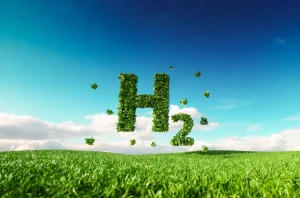Colors of Hydrogen
Introduction
Hydrogen, the smallest and most abundant element in the universe, comes in different forms known by various colors. These colors represent the methods used to produce hydrogen, each with its unique characteristics and environmental impact. In this blog, we will explore the rainbow of hydrogen, shedding light on the different types and their significance in the pursuit of a cleaner and more sustainable energy future.
Grey Hydrogen
Grey hydrogen is the most common type and is produced through a process called steam methane reforming (SMR), which utilizes natural gas as a feedstock. While this method is cost-effective, it releases a significant amount of carbon dioxide into the atmosphere, making it less environmentally friendly.
Blue Hydrogen
To address the environmental concerns associated with grey hydrogen, blue hydrogen was introduced. Produced using the same SMR process, blue hydrogen incorporates carbon capture and storage (CCS) technology to capture and store the emitted carbon dioxide, preventing it from entering the atmosphere. This results in a cleaner form of hydrogen production.
Green Hydrogen
Green hydrogen is often hailed as the cleanest form of hydrogen. It is produced through electrolysis, a process that uses renewable energy sources like wind or solar power to split water into hydrogen and oxygen. The key advantage of green hydrogen lies in its potential to produce zero emissions when powered by renewable energy, making it a cornerstone in the transition to a carbon-neutral energy landscape.
Yellow Hydrogen
Yellow hydrogen is another variation produced through the electrolysis of water, but it relies on nuclear power as the energy source. While it does not emit carbon dioxide during the production process, concerns about nuclear safety and waste management impact its widespread acceptance.
Turquoise Hydrogen
Turquoise hydrogen is an emerging concept that involves using high-temperature nuclear reactors to produce hydrogen through thermochemical processes. This method aims to achieve higher efficiency and lower costs compared to traditional electrolysis, but its development is still in the early stages.
Purple Hydrogen
Purple hydrogen is a term used to describe hydrogen produced from biomethane, which is derived from organic waste or biomass. This method provides a renewable and carbon-neutral source of hydrogen, promoting a circular economy by utilizing organic materials that might otherwise contribute to greenhouse gas emissions.
Pink Hydrogen
Pink hydrogen is associated with the potential use of hydrogen produced from low-temperature nuclear reactors. This method is still in the theoretical and experimental stages, with ongoing research exploring its feasibility and safety.
Conclusion
As the demand for hydrogen continues to grow as a clean energy carrier, understanding the different types becomes crucial. The colors of hydrogen represent a spectrum of production methods, each with its own environmental implications. While grey hydrogen has been a cornerstone of industrial processes, the shift towards green and cleaner variants signifies a global commitment to reducing carbon emissions. Embracing these diverse types of hydrogen is not just a technological evolution; it is a crucial step towards a sustainable and greener energy future.





